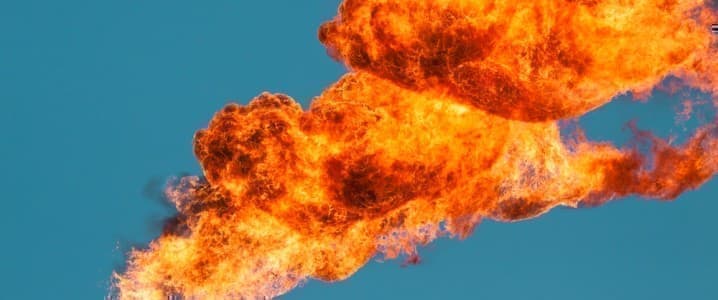Natural gas flaring is a process that has been used for decades in the oil and gas industry. It involves burning off natural gas that is produced during oil drilling operations. While it may seem like a necessary part of oil production, natural gas flaring has significant environmental impacts that cannot be ignored.
How Does Natural Gas Flaring Happen?
Natural gas is often found alongside crude oil deposits. When drilling for oil, natural gas is also extracted from the ground. However, unlike crude oil, which can be stored and transported easily, natural gas is more difficult to transport and store due to its gaseous state. This is where natural gas flaring comes in.
During oil drilling operations, natural gas that cannot be captured or transported is burned off at the well site. This process involves igniting the natural gas as it exits the wellhead, resulting in a bright flame that can be seen from miles away.
Environmental Impact of Natural Gas Flaring
Natural gas flaring has significant environmental impacts that cannot be ignored. The most obvious impact is the release of greenhouse gases into the atmosphere. Methane, which makes up a large portion of natural gas, is a potent greenhouse gas that contributes significantly to climate change..
Natural gas flaring also has an impact on wildlife and ecosystems in areas where drilling operations occur. The bright flames produced by flares can disorient birds and other wildlife while also contributing to light pollution which can disrupt nocturnal animals' behavior patterns.
Reducing Natural Gas Flaring
There are several solutions being implemented around the world aimed at reducing or eliminating natural gas flaring.
Build More Pipelines
One solution involves capturing and transporting excess natural gas instead of burning it off at the wellhead. This requires building new infrastructure, such as pipelines or liquefied natural gas (LNG) plants.
Use Microturbines To Produce Power
Another approach is the use of microturbines, which can generate electricity from excess natural gas that would otherwise be burned off. These small turbines are highly efficient and can provide power for various applications such as remote oil rigs or pipeline operations. This solution not only reduces greenhouse gas emissions but also provides a cost-effective way to produce electricity in areas where traditional grid connections may not be available.
Flare-Gas-to-Liquids Technology
Another promising approach is the use of gas-to-liquids (GTL) technology, which converts waste gases from natural gas flaring into valuable liquid products such as diesel fuel or lubricating oils. FTL technology offers an alternative use for excess natural gas while reducing greenhouse gas emissions and promoting a circular economy in the energy sector.
Carbon Capture and Storage Technologies
Some oil companies are using carbon capture technology to capture carbon dioxide emissions from natural gas flaring and store them underground. This approach not only reduces greenhouse gas emissions but also promotes carbon sequestration, which can help mitigate climate change impacts.
Bitcoin Mining
Bitcoin mining has been a controversial topic due to its high energy consumption and potential environmental impact. However, some bitcoin miners are using their operations to help reduce natural gas flaring. These miners are taking advantage of the excess natural gas that is often burned off at oil drilling sites by using it to power their mining rigs.
By using this excess natural gas, bitcoin miners are not only reducing greenhouse gas emissions from flaring but also providing an alternative use for a resource that would otherwise go to waste. This practice has gained traction in areas where natural gas flaring is common such as Texas and North Dakota, where bitcoin miners have partnered with oil companies to access excess natural gas.
Conclusion
Natural gas flaring remains an issue for both industry stakeholders and environmentalists alike, given its negative impacts on climate change through GHG emissions, among others.
The good news, however, lies in global efforts towards reduction through innovations like micro-liquefaction technology while regulatory measures continue playing their role towards environmentally sustainable practices within this sector.
Many countries and companies are taking action to reduce flaring and implement sustainable practices. As technology continues to advance, we can expect even more innovative solutions. It's important that everyone plays their part in protecting the environment and reducing greenhouse gas emissions. With continued effort and collaboration, we can create a cleaner, greener future for generations to come.
By Michael Kern for Oilprice.com
More Top Reads From Oilprice.com:
- How Recycling Could Solve The Battery Metals Shortage
- These Countries Have The Lowest Inflation In The World
- Green Hydrogen Will Play A Critical Role In A Net-Zero Future


















